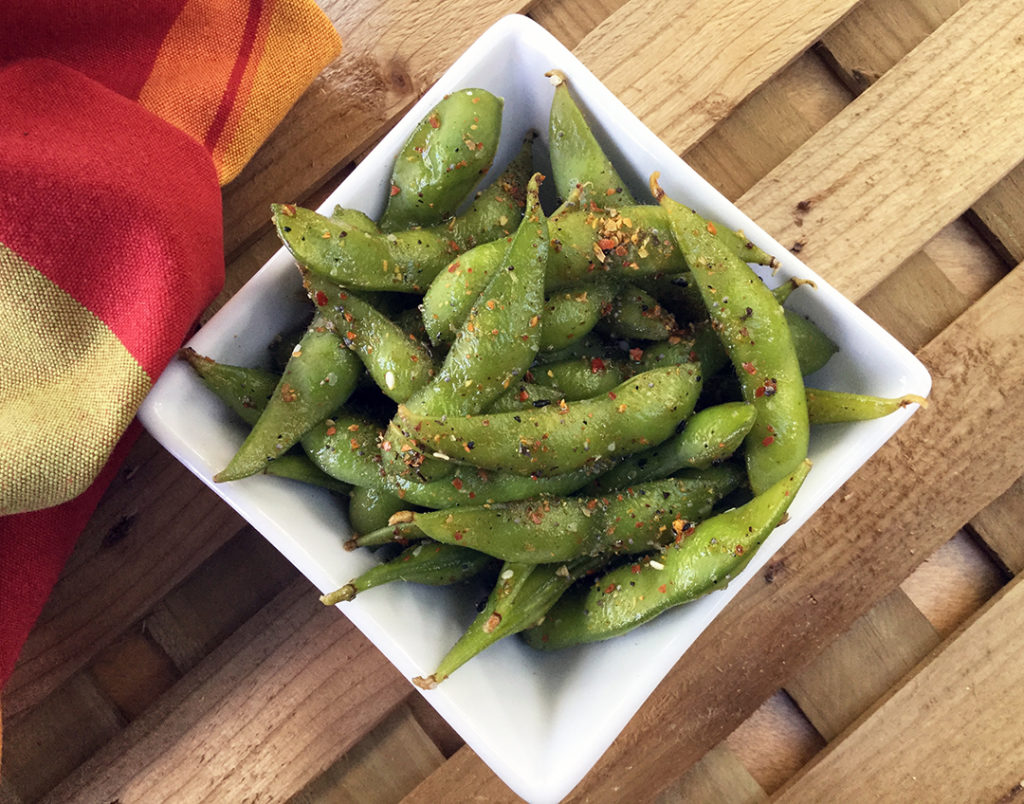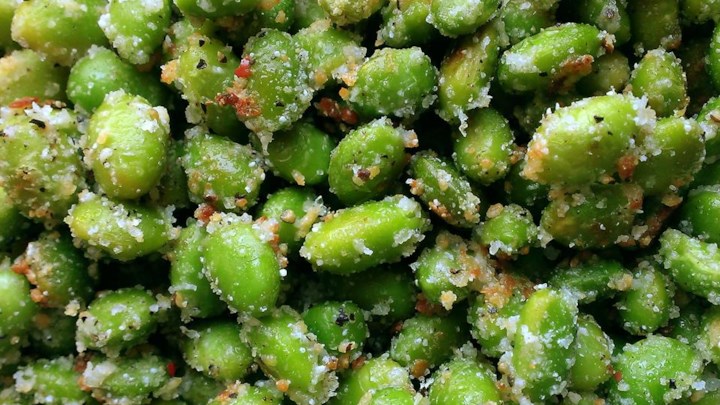“On a side note edamame is so subtle but it is such a game changer!”
“Yes, I know! Have you ever had it warm and salted?”
“No, but I think I could spoon feed it to myself every day and not get sick of it.”
Location Overheard: Pollock Commons
I suppose it was the Asian Edamame Pad Thai on the menu that sparked this particular discussion at the next table over. I guess this dish was a hit amongst the group. Anyway, according to WebMD, (not really sure why WebMD has an article about edamame) edamame is “just a fancy name for boiled green soybeans.”
Edamame is simply immature soybeans, found in a lot of East Asian cuisines. In Japan and Hong Kong, the name edamame literally translates to “stem peas” because the beans were often sold with the stem still intact. Well, apparently these fancy little green soybeans have a lot of health benefits that go unrecognized.
High in protein: Apparently one cup of cooked edamame provides around 18.5 g of protein.
May lower cholesterol: Eating 47 grams of soy protein per day can lower total cholesterol levels by 9.3%.
Rich in vitamins and minerals: In 100 g of edamame: Folate (78%), Vitamin K1 (33%), Thiamine (13%), Riboflavin (9%), Iron (13%), Copper (17%), Manganese (51%).
Rich in fiber: Edamame is rich in protein, antioxidants and fiber that may lower circulating cholesterol levels.
Edamame is also considered one of the most versatile beans to cook with. Here are some ways that you can prepare edamame!
The Japanese typically eat edamame as a side dish. Salt and garlic are typically condiments for edamame.

Just like at Pollock, edamame can also be placed in Pad Thai which makes a tasty dish.

Edamame can also be baked in the oven with salt, pepper, garlic, and parmesan cheese. Similar to the snack called “kale chips” which is made with the same ingredients, crispy edamame can serve as a new side dish or a snack.

Overall, I suppose I learned that edamame is a bean that you can literally add to anything and enjoy the health benefits that come along with it. It was really interesting to hear someone get so excited over these little green beans, but I suggest that it is a valid thing to get excited over. The United States Department of Agriculture even stated that edamame beans are a “soybean that can be eaten fresh and are best known as a snack with a nutritional punch.” I had no idea that edamame was notorious for being such a game changer.

Grace,
I love how you took this blog post in a different direction this week. My family loves edamame, but I think it is nothing special. Every time my family goes to an Asian restaurant, they always order this as their appetizer. Personally, I thought edamame had no nutritional value, so I was really surprised that it was quite healthy for the body. Also, I never knew that edamame was included in other dishes and has such a wide variety of use. You have enlightened me on the versatility of edamame, so I guess I can be hard on my parents anymore. 🙁 Great job!
Grace, I personally love edamame. It tastes great when it has been seasoned or even plain and just boiled. I agree that they can be very nutritious when cooked correctly, but I have also heard that the ways that edamame is often made at restaurants can turn this healthy vegetable into a fat-laden food. This is because chefs often add a lot of oil, salt and other sauces to increase its taste. Either way, I am going to continue to eat edamame because I love it!